Heading 1
Heading 2
Heading 3
Heading 4
Heading 5
Heading 6
Lorem ipsum dolor sit amet, consectetur adipiscing elit, sed do eiusmod tempor incididunt ut labore et dolore magna aliqua. Ut enim ad minim veniam, quis nostrud exercitation ullamco laboris nisi ut aliquip ex ea commodo consequat. Duis aute irure dolor in reprehenderit in voluptate velit esse cillum dolore eu fugiat nulla pariatur.
Block quote
Ordered list
- Item 1
- Item 2
- Item 3
Unordered list
- Item A
- Item B
- Item C
Bold text
Emphasis
Superscript
Subscript
Making it easier for everyone to personalise content
Booking.com is a leading tech travel company. It connects millions of travellers with memorable experiences, a range of transport options, and incredible places to stay, from homes to hotels and much more.
As part of the Tooling team at Booking.com, I took on the challenge of designing a more intuitive query building experience to make it easier for everyone to confidently and efficiently create personalised content.
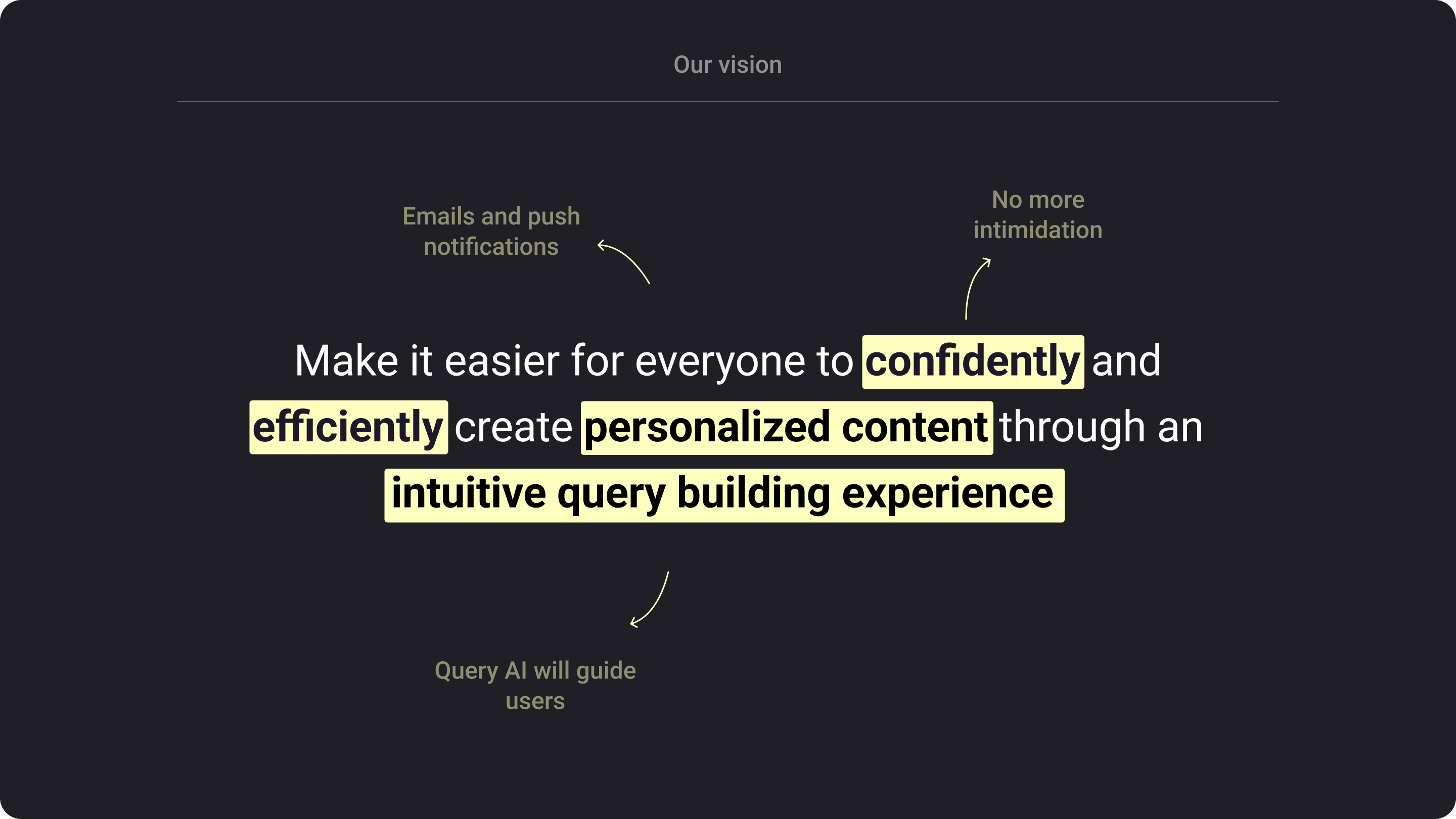
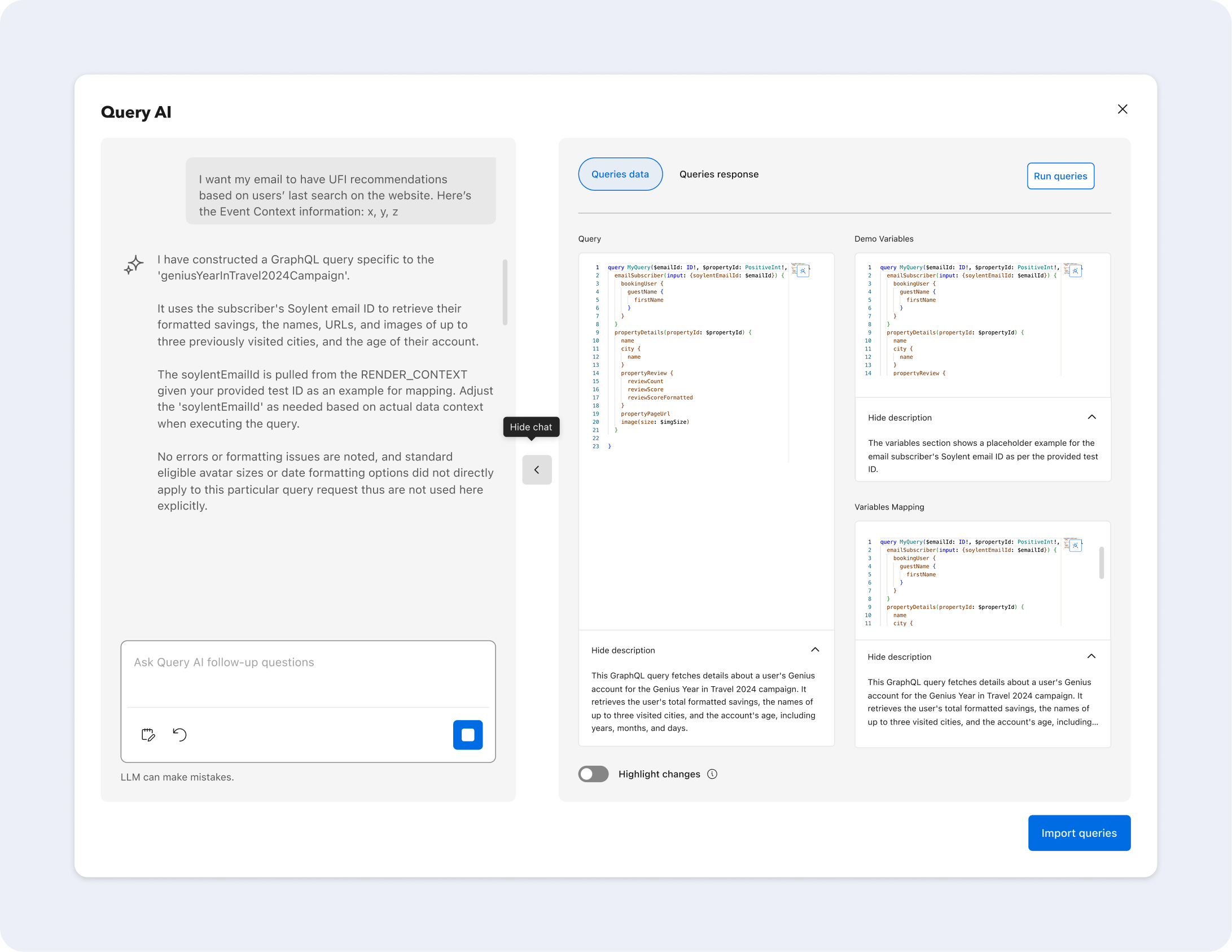
The challenge
Content Builder is an internal tool at Booking.com used to create and send personalised emails and push notifications to customers.
During an user research I conducted on the entire tool, we identified a major pain point that had the potential to significantly improve both the user experience and business outcomes: the GraphQL query building experience.
Indeed, to personalise content, users often need to switch from Content Builder to a separate website to manually build GraphQL queries.
- This process is time-consuming and disrupts their workflow.
- Many users also found the structure of query data and responses intimidating and difficult to interpret.
- As a result, their confidence in using the tool decreased, and they became hesitant to work with queries at all. This fear directly impacted their ability to personalise content effectively, limiting the full potential of the tool.
Improving the query experience became our focus, as it addressed a key barrier to efficiency and personalisation: two essential goals for both the users and the business.
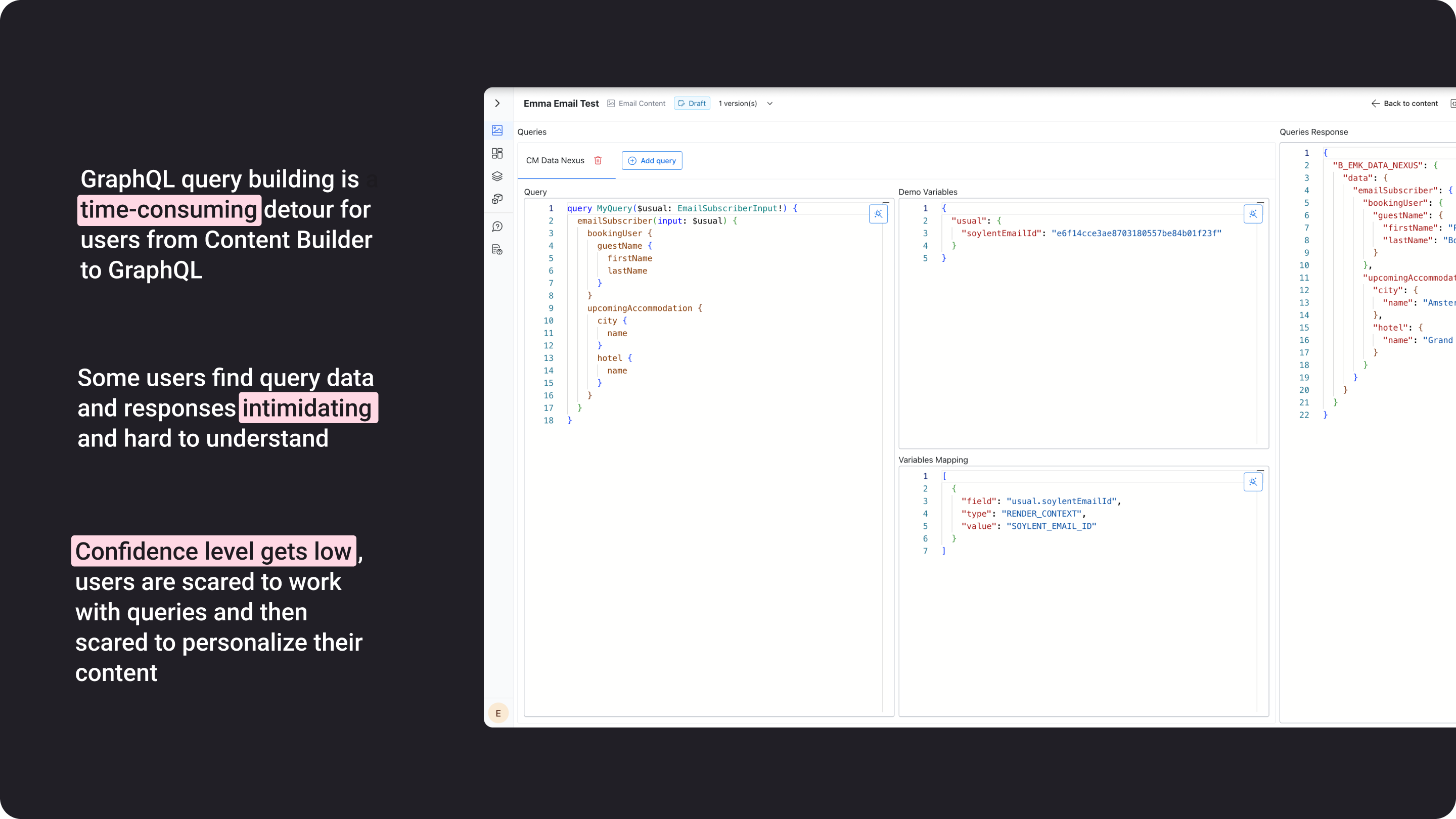
From insight to impact: a Hackathon success story
We seized the opportunity offered by Booking.com’s annual Hackathon to tackle the query‑building pain point.
The three‑day sprint allowed us to prototype and validate a solution quickly while collaborating closely across disciplines.
During the Hackathon I led discovery interviews, defined the product vision, and produced wireframes and an interactive prototype. Together with my engineering colleagues we validated the concept and quickly implemented it.
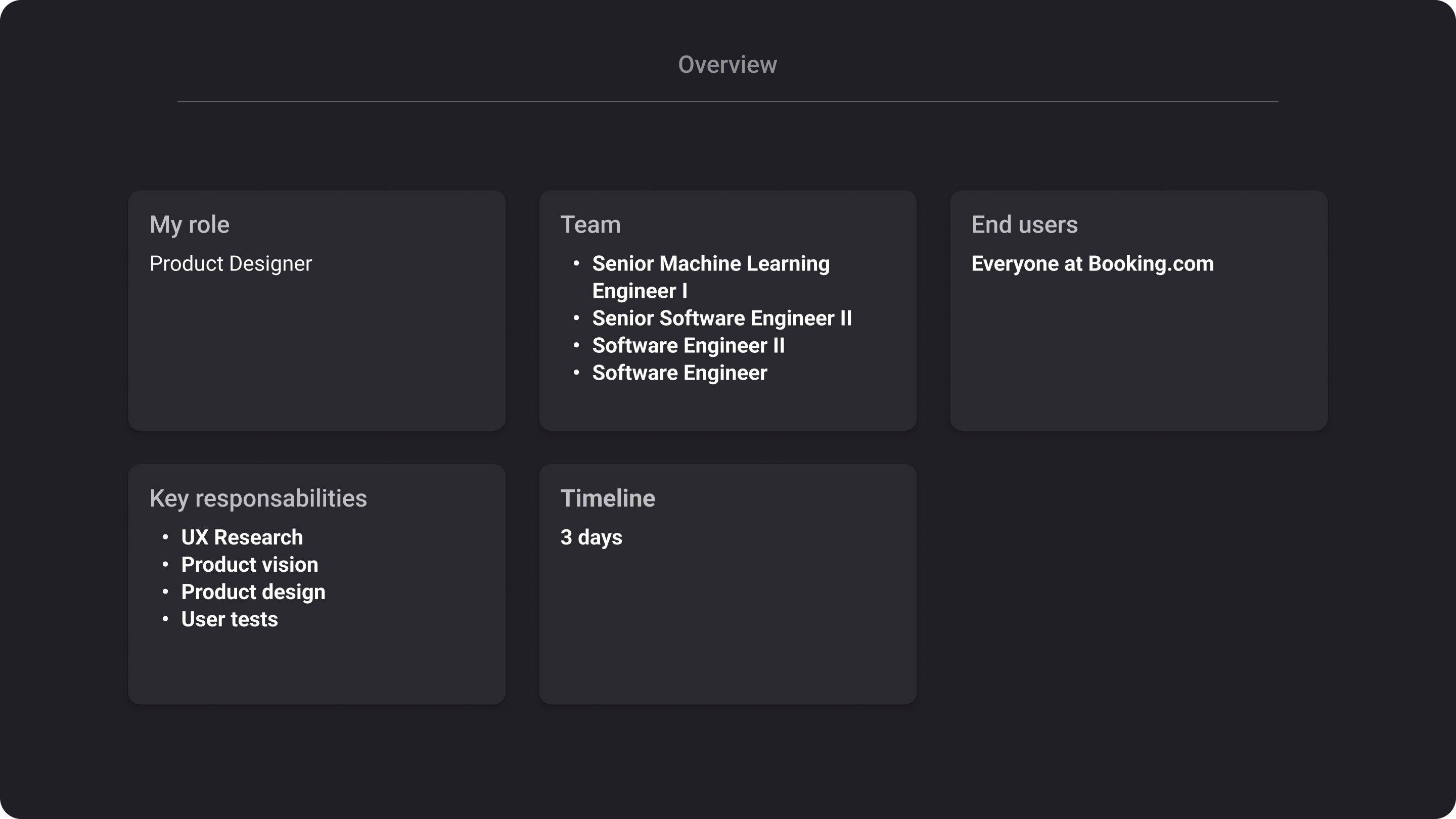
User research revealed why queries were confusing
Before working in solutions, I conducted quick but in-depth user research to better understand how users interact with queries and where exactly they struggle. I ran usability tests where participants were asked to complete a specific task using Queries within Content Builder.
To capture not just what users did but how they felt, I also asked them to rate their confidence level in using Queries on a scale from 1 to 5. The results confirmed our hypothesis:
Users found the experience confusing, unintuitive, and overwhelming: often rating their confidence as very low.
These insights helped shape our approach and ensured we addressed the core problem, not just the symptoms.
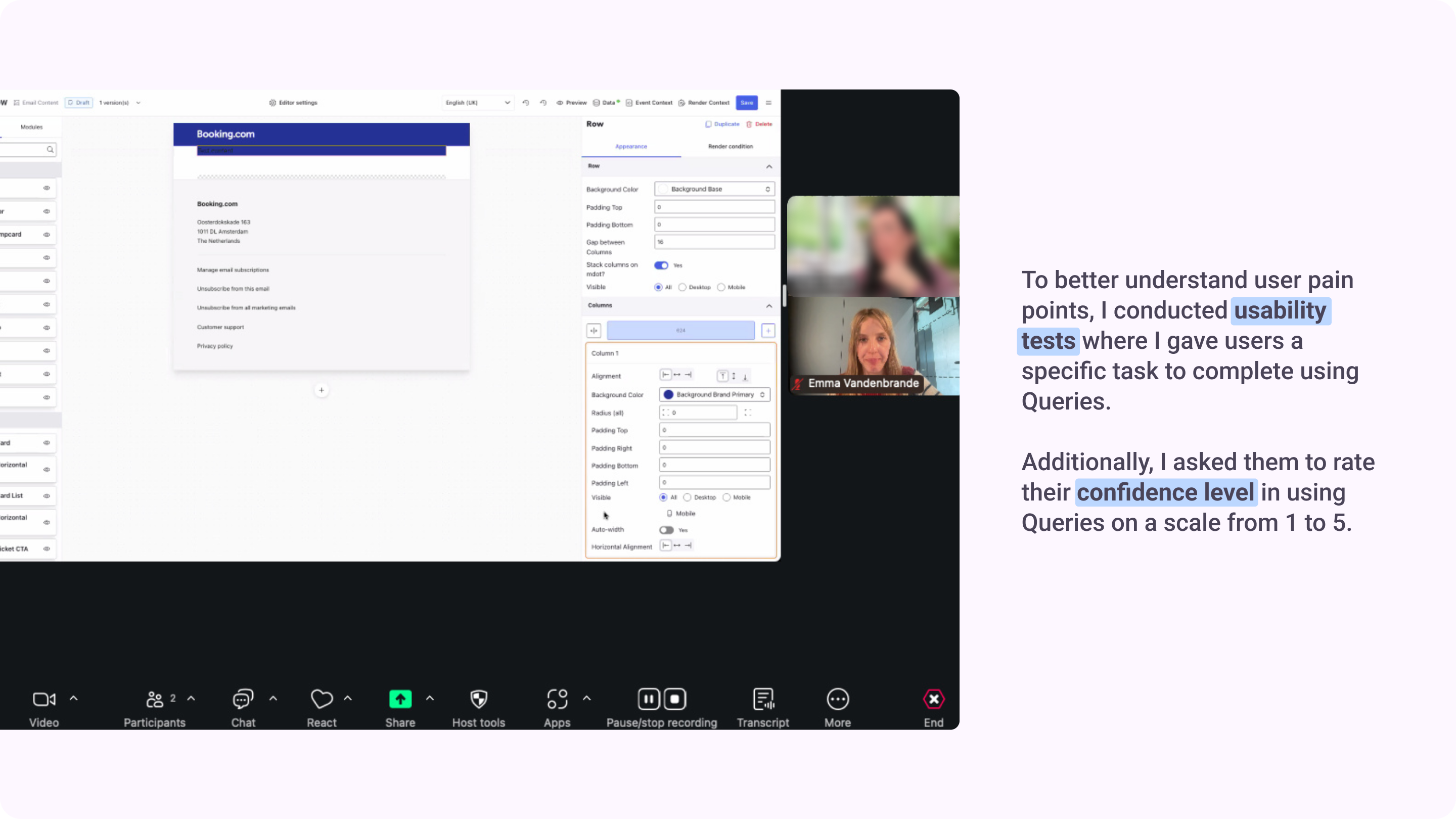
Leveraging AI & Machine Learning to innovate problem solving
To tackle this complex challenge, I closely collaborated with Machine Learning specialist and back-end engineers to deepen my understanding of Large Language Models (LLMs) and the latest advances in AI technology.
Together, we explored whether and how AI could effectively address the problem at hand.
This collaboration allowed us to:
- Evaluate the feasibility of AI-driven solutions based on current LLM capabilities.
- Identify opportunities where AI can enhance user experience and automate key tasks.
- Align AI potential with user needs and business goals to ensure practical impact.
By bridging UX design with technical expertise, I ensured our approach was grounded in realistic AI possibilities.
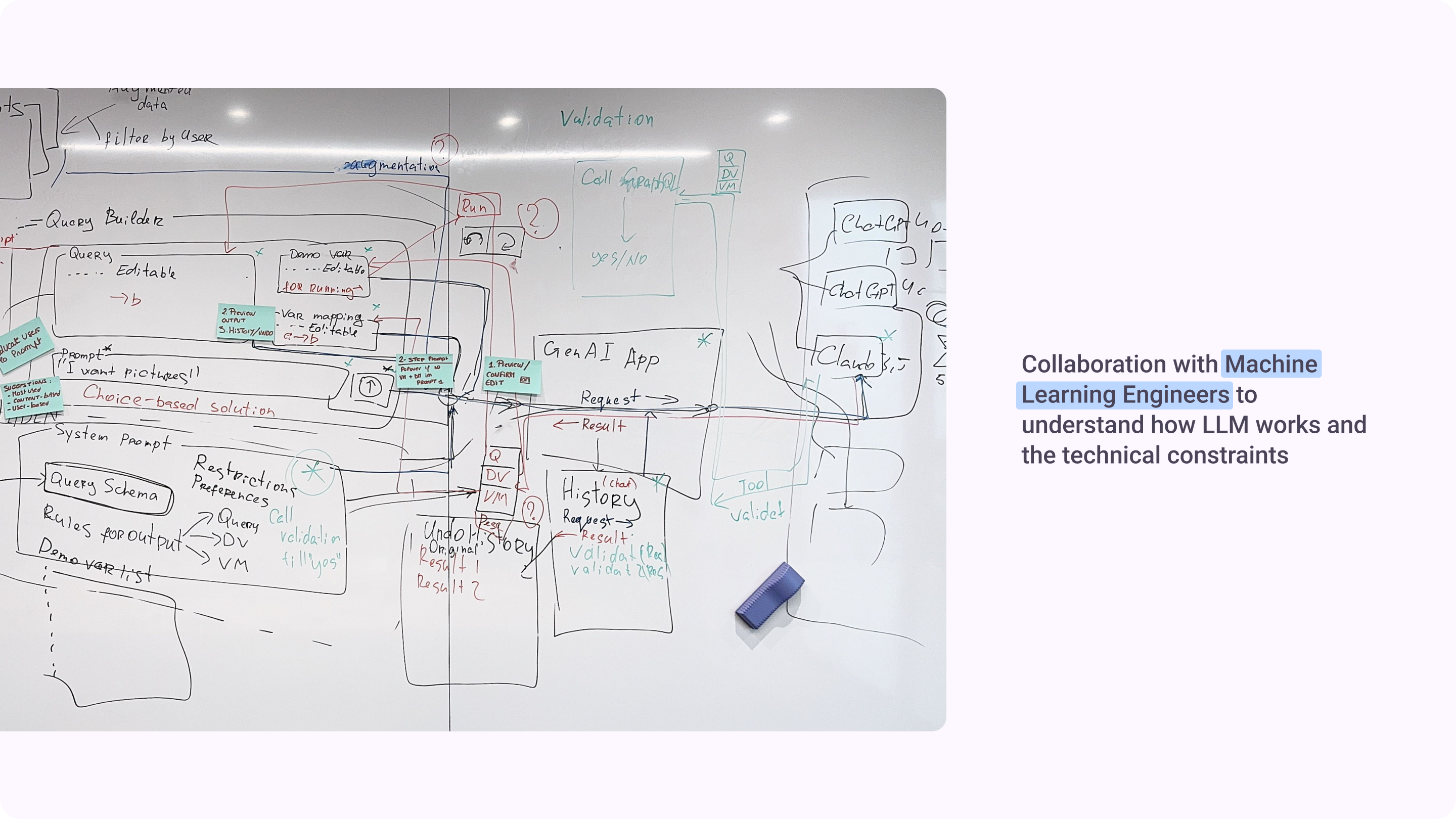
Building an AI assistant through cross-disciplinary collaboration
After gathering these valuable user insights, our cross-functional team came together to define a bold product vision: an AI-powered assistant seamlessly integrated within the communication tool.
This assistant would guide users through generating and understanding queries via a simple, conversational chat interface.
Our close collaboration ensured that the AI solution was both technically feasible and deeply aligned with real user needs, bridging design and machine learning expertise to create a truly user-centered innovation.
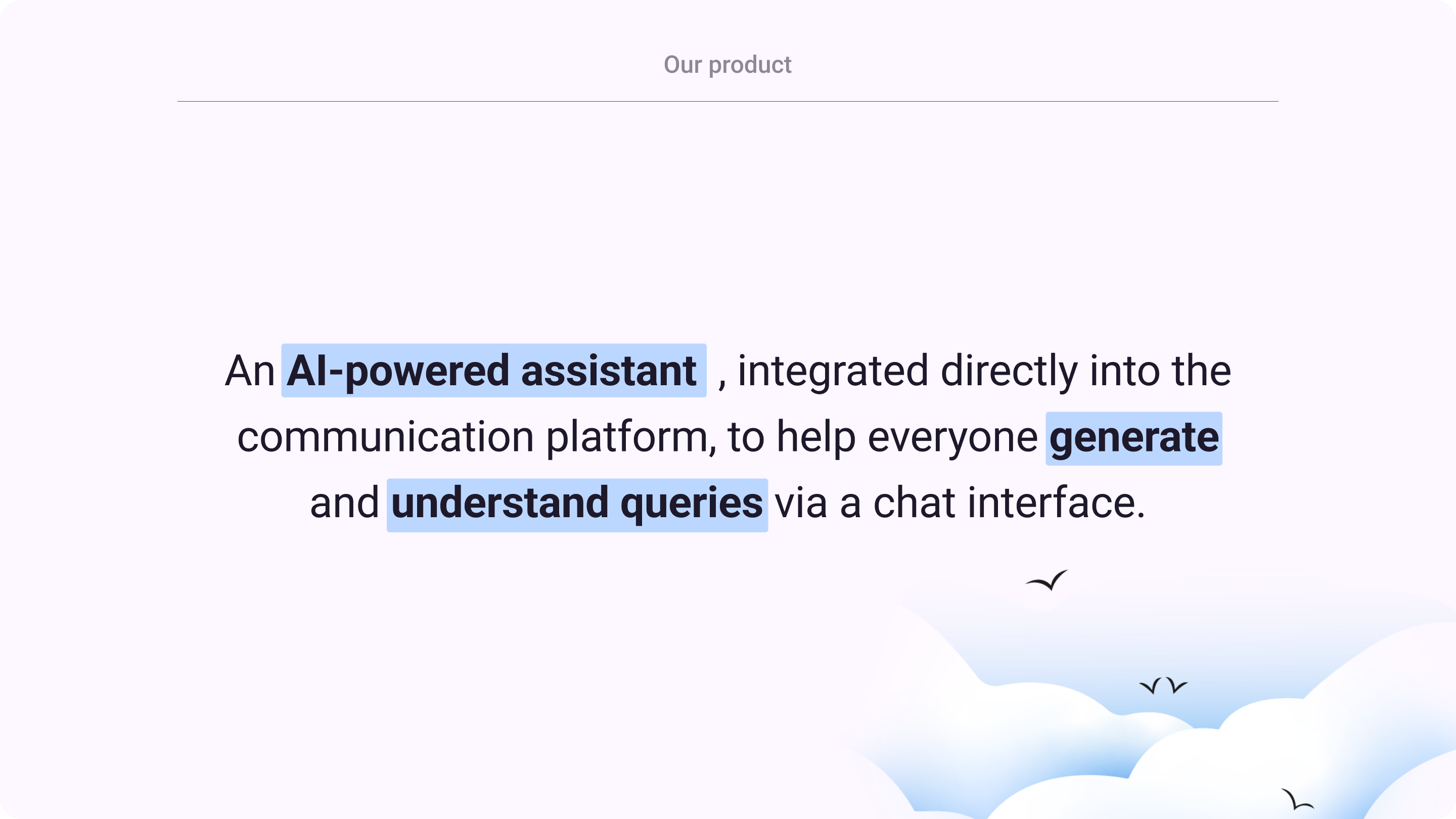
The competitor analysis
Our competitor analysis included key players like ChatGPT and Gemini, alongside other relevant applications such as Bolt, Lovable, and V0.
By examining the interaction patterns and user interfaces of these established AI-driven platforms, we aimed to create an experience that would feel intuitive and familiar to users already engaging with AI technologies. This strategic approach allowed us to leverage existing user mental models and reduce the learning curve for our Query AI.
The design principles
The design principles created throughout this project were centered on bringing more confidence to users by improving clarity, education, and reassurance at every step of the query building experience.
Together, these design decisions create an environment where users feel supported, informed, and empowered throughout the entire query building process.
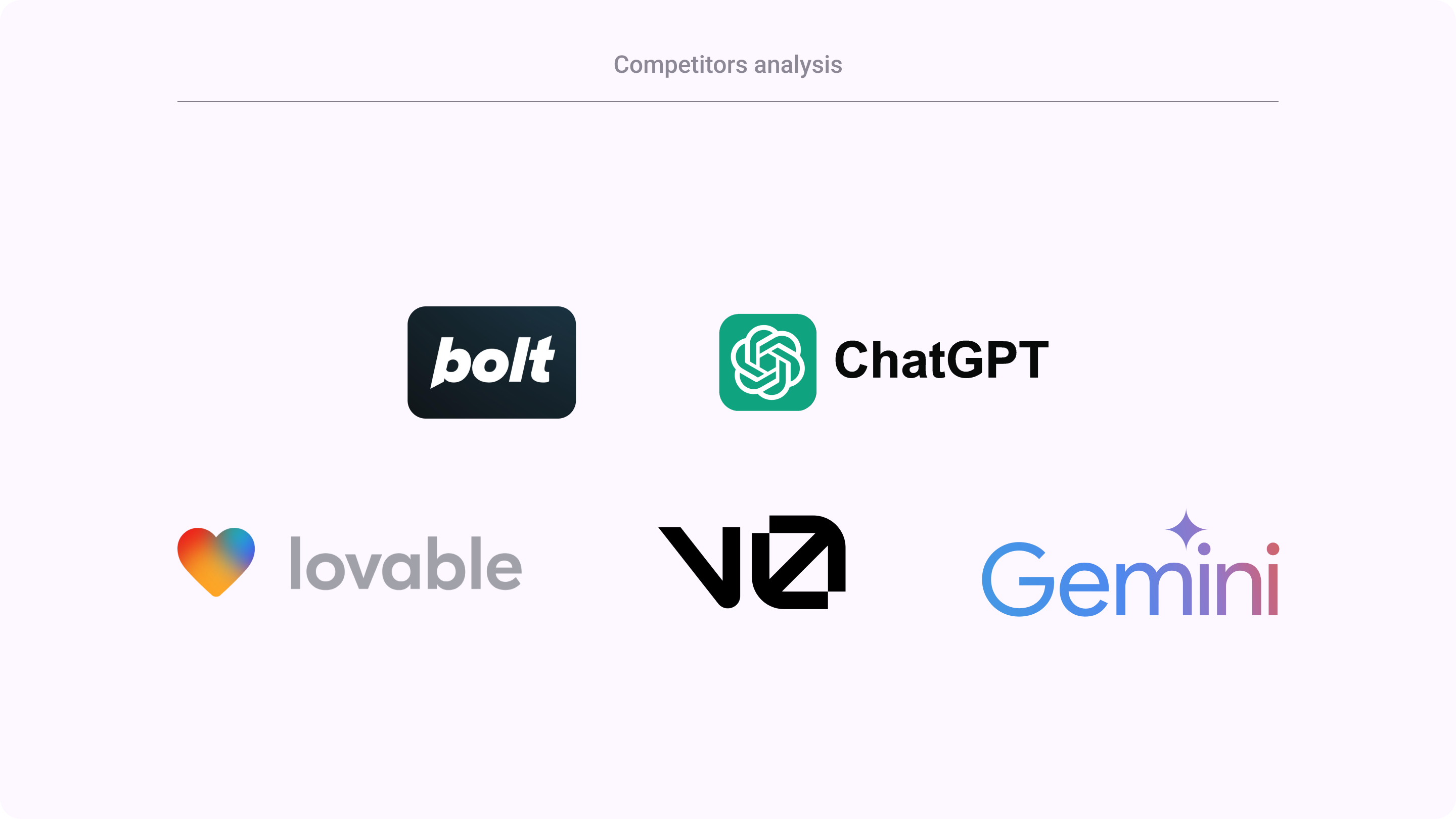
Introducing Query AI without disrupting user flow
To ensure the Query AI enhances rather than interrupts the user experience, it was carefully integrated into the existing communication tool. The goal was to provide powerful query-building capabilities without disturbing users’ usual workflows or overwhelming them with new interfaces.
Guiding users with context and ready-to-use templates
To make the Query AI approachable and reduce friction, users are guided step-by-step with clear contextual hints.
The interface provides inline explanations encouraging users to be specific, add context, and include relevant keywords when building queries. This guidance helps users formulate more precise requests, improving the quality of results and building their confidence.
Additionally, users don’t have to start from scratch every time. Ready-to-use templates tailored for common scenarios like accommodations, UFI recommendations, and customer data are prominently provided. This not only accelerates the query-building process but also reduces cognitive load, enabling users to focus on their goals rather than the technicalities of query construction.
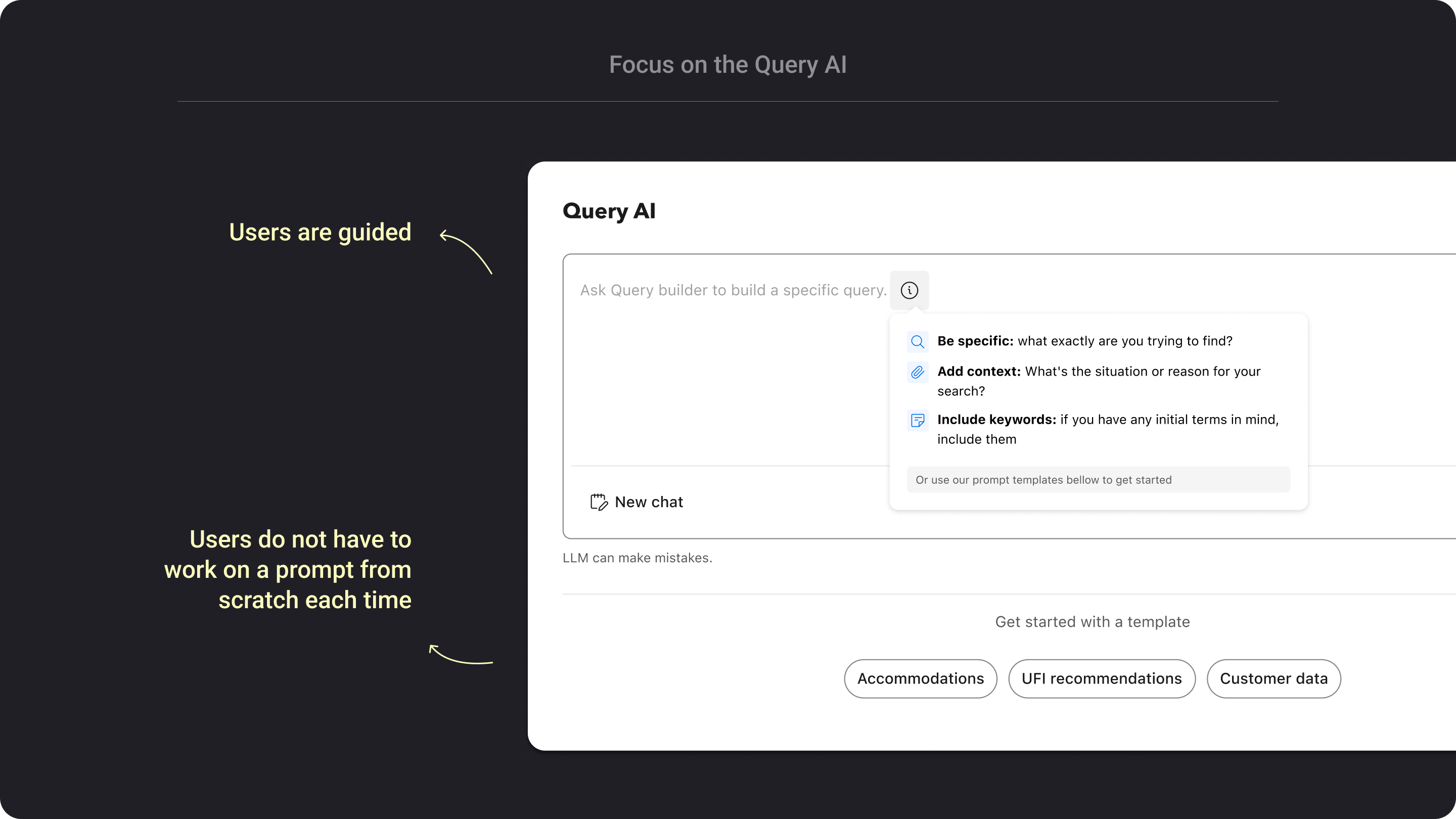
Guiding users with clarification and deep dive
Users can directly prompt the AI for clarifications or request adjustments to the output using a natural language input field. This allows for a conversational approach to query building, empowering users to steer the AI towards their specific data needs.
Furthermore, the design provides transparent access to the underlying query structure and its variables. By selecting the "Queries data" tab, users can inspect the generated GraphQL query, alongside example data ("Demo variables") and clear, plain-text descriptions explaining each part of the query and the role of the variables. This level of detail fosters trust and understanding, allowing users to learn from the AI's suggestions and integrate the queries with confidence.
The "Highlight changes" feature further aids comprehension by visually indicating modifications made during the iterative prompting process.
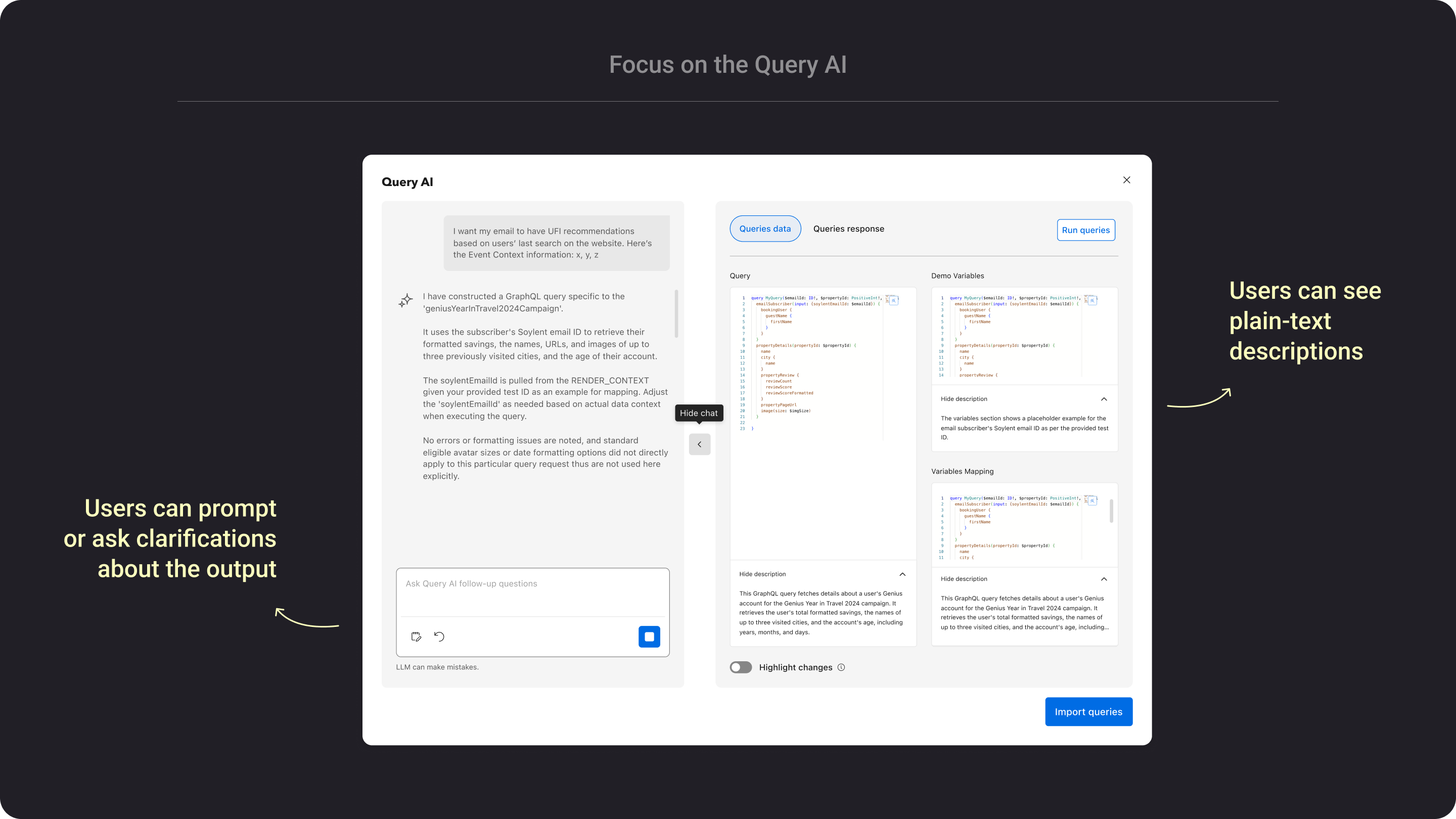
Guiding users when errors appear
Even with intelligent AI, there are times when the requested information isn't immediately available. To maintain a seamless user experience, the Query AI interface provides clear and actionable guidance after 3 unsuccesful trials:
- Provide more details: this encourages users to refine their query by offering specific context or additional information the AI might need.
- Start a new chat: this allows users to reframe their request with a clearer objective, potentially leading to more relevant results.
- Try again: a simple retry option acknowledges that occasional processing hiccups can occur and encourages users to re-submit their query.
This proactive guidance ensures users aren't left with a dead end, but instead are empowered to adjust their input and continue their data exploration within the Query AI.
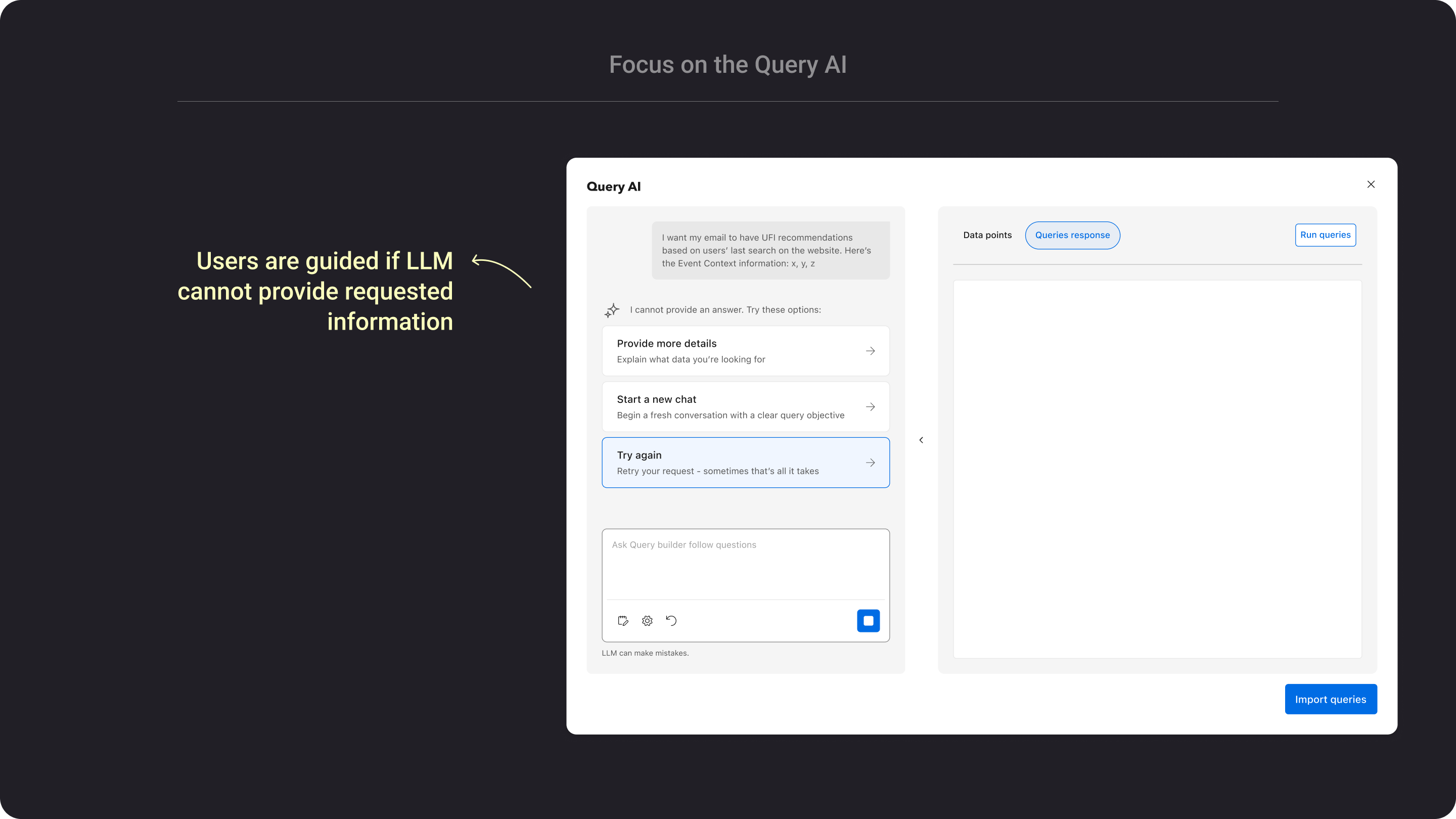
Guiding users to focus on the code or talk to Query AI
Recognisig that users have diverse preferences and levels of technical expertise, the Query AI interface offers a flexible interaction model. Users can toggle between a traditional code view, displaying the raw GraphQL query, and a chat view, enabling natural language interaction with the AI.
This dual approach empowers users of all backgrounds to effectively build and understand their data queries within the Query AI, catering to both technical users who prefer direct code manipulation and those who favor a more conversational experience.
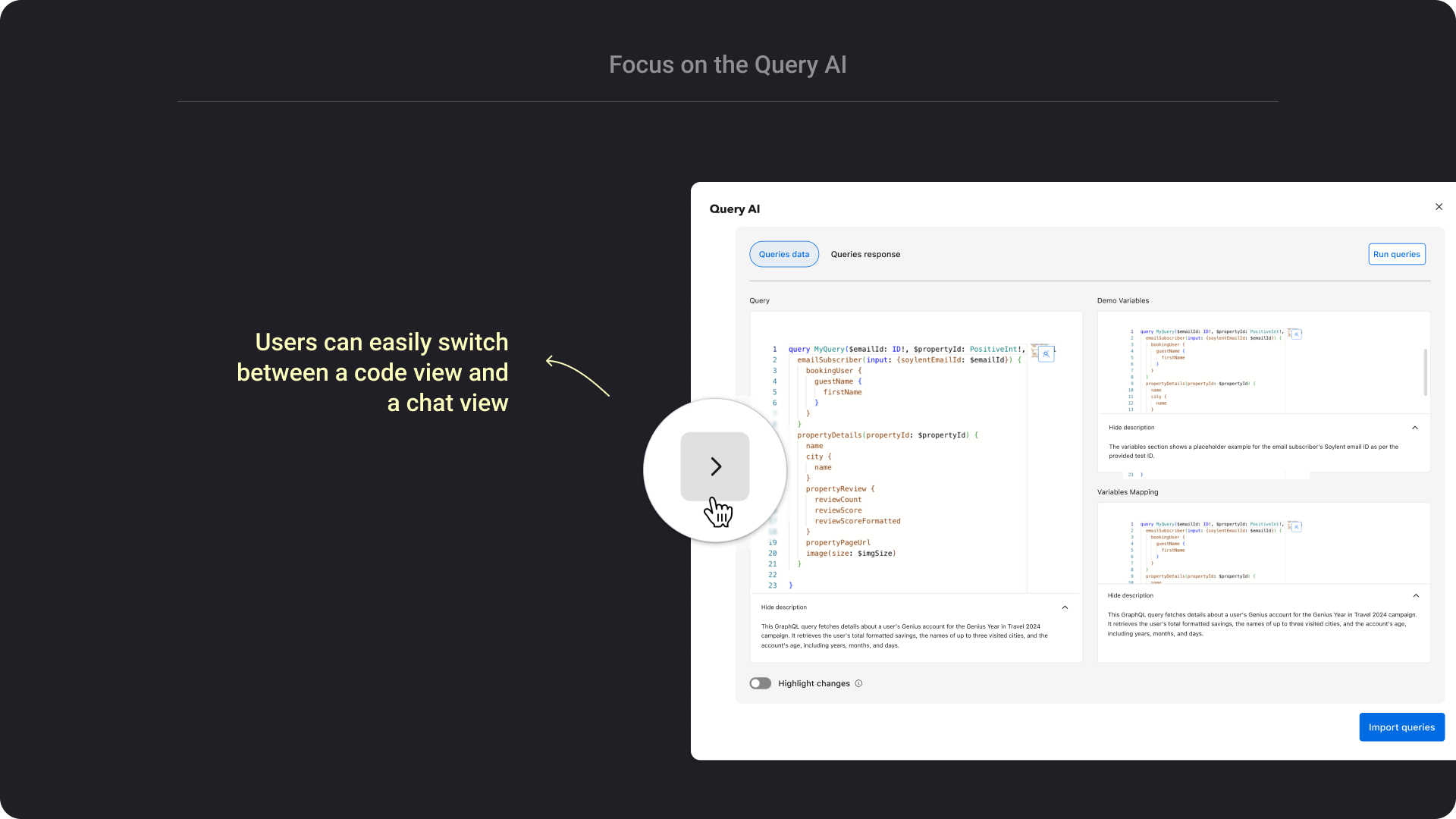
Impact: what Query AI changed
Query AI has changed how users interact with data, delivering significant improvements in efficiency and accessibility.
Before Query AI, most users lacked the ability to create complex data queries. Now, with Query AI, anyone can formulate a query in approximately 2 minutes. Even users who were previously able to create queries have experienced a time saving of over 80%, reducing the average query creation time from 15 minutes to just 2 minutes.
Beyond speed, Query AI has had a transformative impact in several key areas:
- Hyper-personalized content: users can now easily work with dynamic content in emails and push notifications.
- More independent users: users no longer need to rely on developers to personalize their content.
- Increased confidence: by working with plain text instead of code, users gain more confidence in their ability to use the tool effectively.
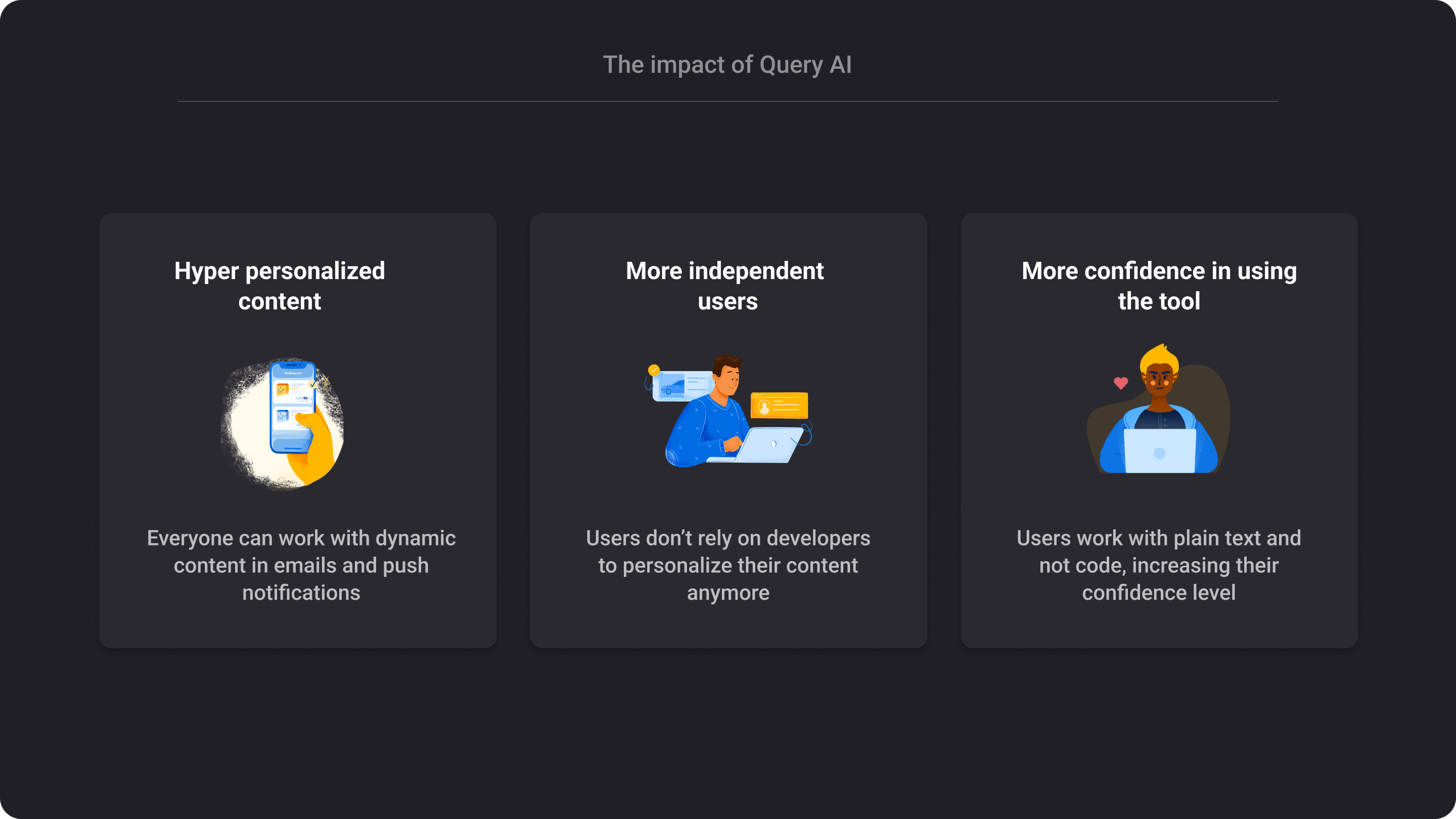
The challenges we faced: building Query AI under pressure
The Query AI project, while highly impactful, presented several key challenges:
- Time constraints: as a Hackathon project, the development timeline was extremely compressed. This necessitated rapid prototyping, validationand a focus on core functionality, requiring efficient decision-making and prioritisation.
- Technical learning curve: the project demanded a quick understanding of complex technologies, notably Large Language Models (LLMs) and GraphQL. To overcome this, I collaborated closely with Machine Learning specialists and backend engineers, leveraging their expertise to quickly grasp these concepts. I also explored AI tools to accelerate my understanding of these complex concepts, enabling me to design an intuitive user experience despite the time constraints.
- Cross-disciplinary collaboration: the successful development of Query AI relied on strong communication and collaboration across UX design, engineering, and Machine Learning, where alignment was needed across terminologies, diverse expertise and perspectives.
Despite these challenges, the project's success demonstrates the power of cross-disciplinary collaboration.
Next steps
Our journey with Query AI doesn't end here. We are committed to continuous improvement, driven by ongoing user testing and the valuable insights we gather from their interactions. Our next steps focus on refining the experience and further empowering users in their content personalization workflows.
Based on initial user feedback and our vision for the future, we are exploring the following enhancements:
- Proactive AI suggestions: implementing AI that anticipates user needs and proactively suggests relevant query structures or data points based on their context, users and previous interactions.
- Advanced template library: expanding the library of ready-to-use templates to cover a wider range of personalization scenarios and offer more starting points for users.
By continuously listening to our users and iteratively developing Query AI, we aim to create an even more intuitive and efficient tool that enables everyone at Booking.com to confidently craft impactful and personalised experiences for our customers.
Final thought: a new era of personalisation
Query AI marks a pivotal shift towards a more intuitive and accessible approach to content personalisation at Booking.com.
This project showcases the transformative potential of integrating AI into internal tools, paving the way for even more streamlined and personalised experiences for Booking.com's global audience.